TOOL BOX
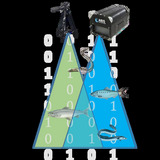 |
Estimating fish stocks by a combination of several monitoring methods: considerations for the development of a toolbox |
|
Research
Context and Issues
In France, about fifty diadromous migratory fish counting facilities (STACOMI) have been set up to obtain information on migratory fish flows. These stations, although very informative, often only allow partial observation of fish flows (coverage of the observation device less than the width/height of the watercourse, presence of a bypass arm or reach, effectiveness of the device depending on flow or turbidity). The numbers counted are thus more or less different from the actual fish flows, and in the absence of abundance estimates, the interpretation and spatio-temporal comparison of the data from these counting stations is questionable. In addition, the national context for the management of migratory fish, defined by the National Strategy for the Management of Migratory Diadromous Fish (STRANAPOMI), requires improved monitoring of populations and catches.
Objectives
The objective of the action, which is carried out within the framework of the AFB-INRA R&D pole (Toolbox project) is to offer tools to estimate the detection efficiency of the observation systems in place and the abundance of fish (migratory flows). For this, a toolbox approach combining field observations and modelling was developed. This involves implementing a general approach, applicable to different cases in terms of counting device (trap, video-counting, infrared scanner, etc.) or species studied.
Methodology
The toolbox approach consists of two main tools: a temporary counting device and a hierarchical Bayesian model. In our tests, the temporary counting device is an ARIS acoustic camera however this approach can be used with different types of temporary counting device as long as they are easily transposable and allow species identification.
At first, an ARIS acoustic camera (or other) is installed temporarily in complement to the existing counting station (in the immediate vicinity). After a coupling period of a few months between the two observation systems, data from the two counting devices will be coupled and used in a Bayesian hierarchical model to estimate the migration flow and detection probabilities of the existing device and the acoustic camera..
To evaluate the efficiency of the models and the conditions of use of the approach (period of installation of the temporary counting device, number of months of coupling required between the two counting devices, minimum number of fish counted at the counting station,...), simulated migration flow data were used..
To validate the approach and its transferability to metering stations, tests are performed on two existing fish counting facilities and monitoring is performed on two different species. On the River Touques (Normandy), a video-counter is installed at the Breuil en Auge fish counting facility (monitored by the Calvados fishing federation) and for our tests, the monitoring and the estimates will be made on the downstream eels run. On the River Selune (Normandy), the monitoring of adult Atlantic salmon is carried out by coupling two acoustic cameras at Ducey..
Expected results
The first results obtained via simulations and tests on fish counting facilities show that the approach is general enough to allow its use on different types of counting device (video-counting, vaky, trap,...) and to have an estimate of the efficiency of the counting device in place and the migratory flows of different species studied (salmon, trout, eels, shad,...).
For an easier use of the toolbox by potential users, recommendations for the installation of the temporary counting device (ARIS ) and instructions for use as well as simplified functions to run the models have been made. Training on the use of the toolbox will soon be offered to managers.
People involved
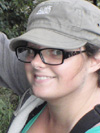 |
BOULENGER Clarisse, Scientist Phone : +33 2 23 48 55 28 Email : clarisse.boulenger@inrae.fr |
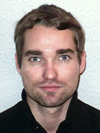 |
MARTIGNAC François, Scientist Phone : +33 2 23 48 56 25 Email : francois.martignac@inrae.fr |
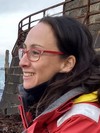 |
NEVOUX Marie, Scientist Phone : +33 2 23 48 50 15 Email : marie.nevoux@inrae.fr |
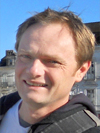 |
ROUSSEL Jean-Marc, Scientist Phone : +33 2 23 48 57 75 Email : jean-marc.roussel@inrae.fr |
Partners
Funding and Support
AFB
